Table of Contents
Are you an avid road cyclist looking to gain a competitive edge? In the world of road cycling, aerodynamics is the most significant speed upgrade you can make, and the good news is that it doesn’t have to break the bank.
In this comprehensive guide, we will delve into the essential aspects and strategies that will make your road bike more aerodynamic, helping you ride faster and more efficiently without compromising your ability to generate power.
Let’s explore how to get more aero on your road bike.
Understanding Aerodynamics
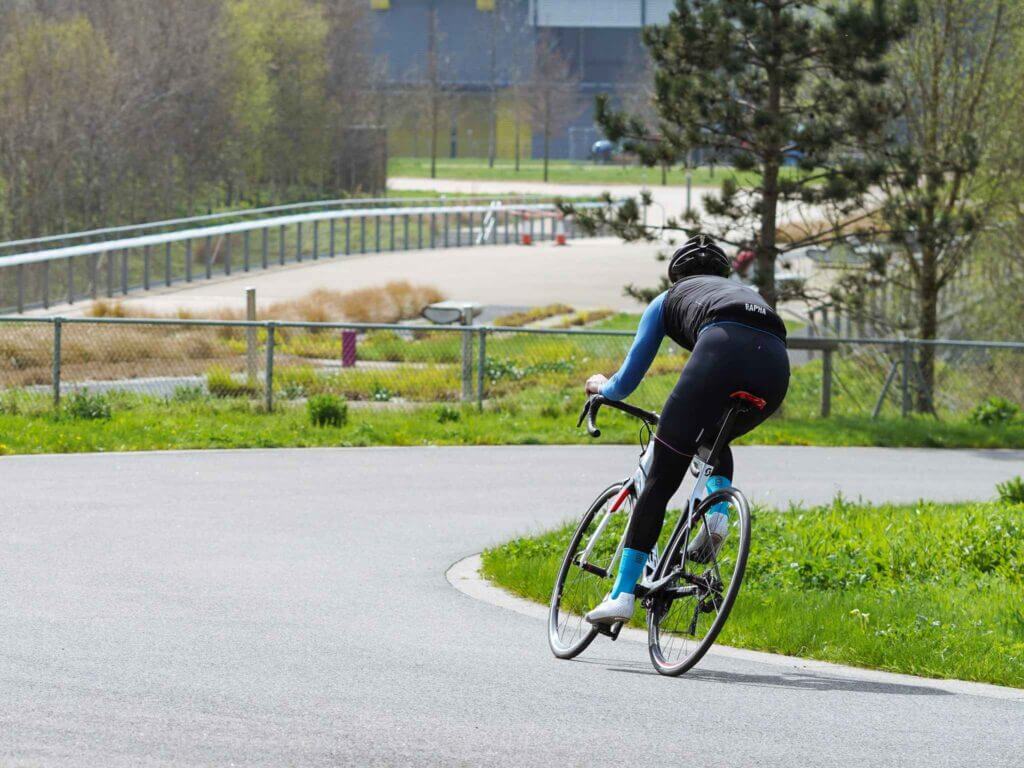
Aerodynamics plays a crucial role in optimizing your road cycling experience. Before we explore practical tips for becoming more aerodynamic, it’s essential to understand the core principles of aerodynamics and how it influences your performance on the road.
The Basics of Aerodynamics
Aerodynamics, often referred to as being “aero,” is the science of airflow and its impact on your cycling experience. In simple terms, it’s about reducing the resistance of air as you ride.
The key to aerodynamics is minimizing drag, which is the force that resists your forward motion. Being more aerodynamic means you face less drag, reducing the energy required to maintain a specific speed and allowing you to ride faster with less effort.
How Aerodynamics Affect Your Cycling
When it comes to road cycling, it’s important to understand the forces that impact your performance. Of all the forces that can hinder your progress on the bike, the two most significant energy consumers are air resistance and gravity.
Gravity’s effects can be mitigated by staying on flat terrain, but when you’re on two wheels, battling air resistance is inevitable. Even on a perfectly calm and windless day, you, as a cyclist, create a substantial amount of wind, and the faster you ride, the more pronounced this resistance becomes.
In fact, once your cycling speed surpasses approximately 16 km/h (10 mph), air resistance, often referred to as drag, emerges as the dominant force that cyclists must battle against.
Astonishingly, as your speed soars to more than 48 km/h (30 mph), nearly 90% of the power generated by your muscles is expended in combating this relentless opponent.
Even at lower speeds, air resistance plays a substantial role in sapping the energy you use to propel your bike forward. At approximately 16 km/h (10 mph), around 50% of your power is directed towards countering air resistance.
The relationship between speed and air resistance is not linear; it’s exponential. Doubling your speed, say from 20 to 40 mph (32 to 64 km/h), doesn’t just double the resistance; it amplifies it considerably—by a factor of approximately 8 times. This exponential increase in drag means that as your speed rises, the energy needed to overcome air resistance spikes dramatically.
Understanding the impact of aerodynamic drag is crucial because it underscores the critical role of aerodynamics in road cycling. By reducing your aerodynamic profile and optimizing your riding position, you can minimize the energy needed to overcome air resistance, allowing you to ride faster and more efficiently, whether you’re just cruising along or pushing your limits.
Rider Position and Posture
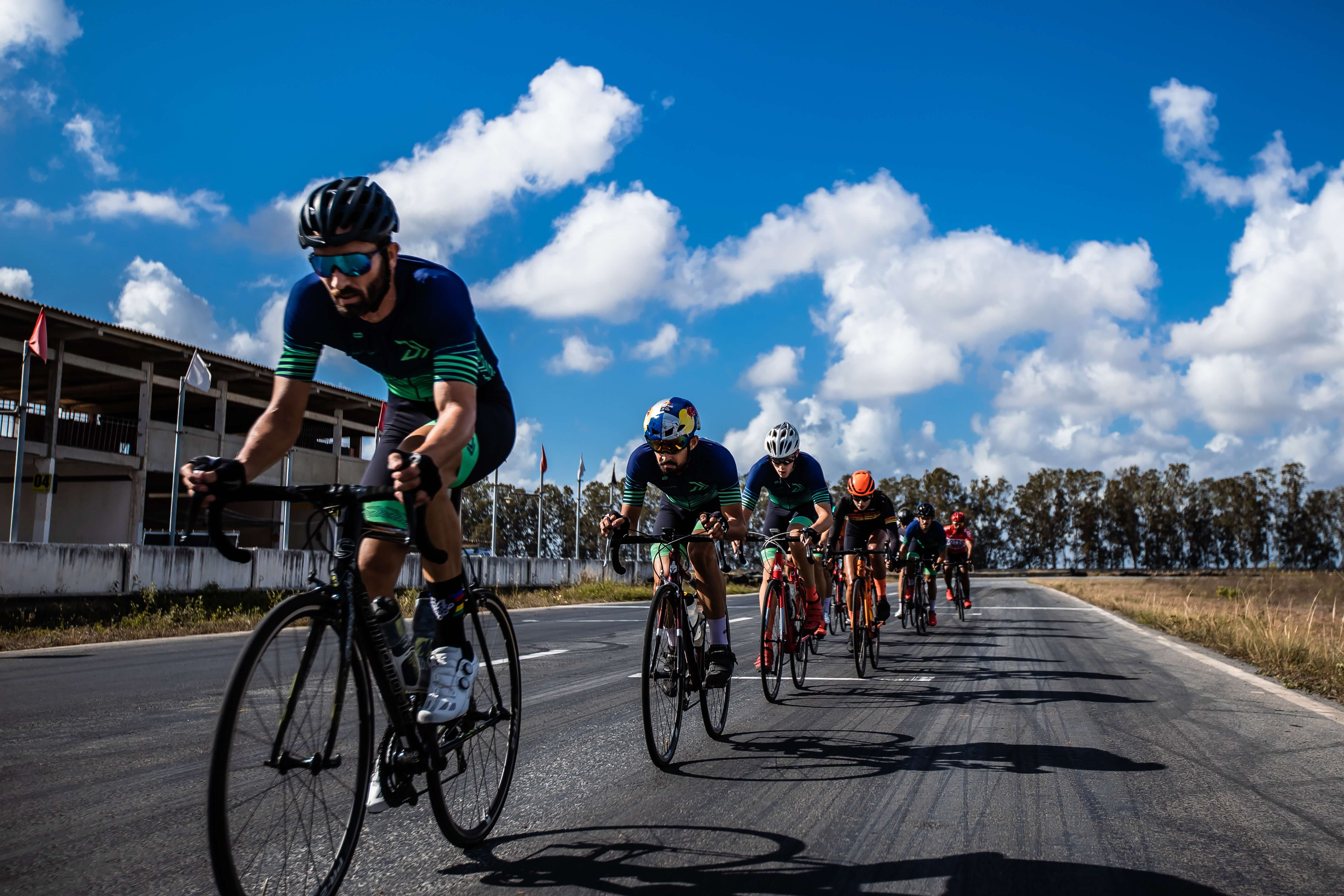
Now that we have a solid understanding of the importance of aerodynamics, let’s delve into practical tips to optimize your riding position and posture.
The Perfect Riding Position
Your journey toward becoming more aero begins with your riding position. To effectively reduce wind resistance, aim for a low, streamlined posture.
For most riders, this means hinging at the hips, creating a back that is nearly parallel to the ground, and holding the hoods of the handlebars with your elbows bent at 90-degree angles.
This posture creates around a 13-14% reduction in drag compared to the classic upright cycling posture, making it a significant upgrade in your quest for aerodynamic efficiency, while keeping your elbows narrow.
Adjusting Your Saddle Position
One straightforward adjustment you can make to improve your aerodynamics is to fine-tune your saddle position. Start with adjusting your saddle height, which is easily done in a matter of minutes with a hex key being the only tool required.
To achieve the optimum height, a quick rule of thumb is to use your inseam measurement and subtract 10cm. For example, if your inseam is 85cm, try setting your saddle height at 75cm.
Lowering Your Bike’s Front End
Lowering the front end of your road bike can significantly contribute to a more aerodynamic riding position. Typically, road bikes are sold with a steerer length that allows for a few spacers, usually totaling around 2.5cm and located under the stem.
To lower the front end and obtain a more aero position, you can try removing some or all of these spacers. This process is often referred to as ‘slamming the stem’ in cycling terminology.
While there is an ongoing debate among cyclists about whether this approach is suitable for everyone, it can be beneficial for those with the flexibility and time to adapt. However, if you experience any discomfort or notice a decrease in power output, it’s essential to make adjustments gradually to avoid injuries.
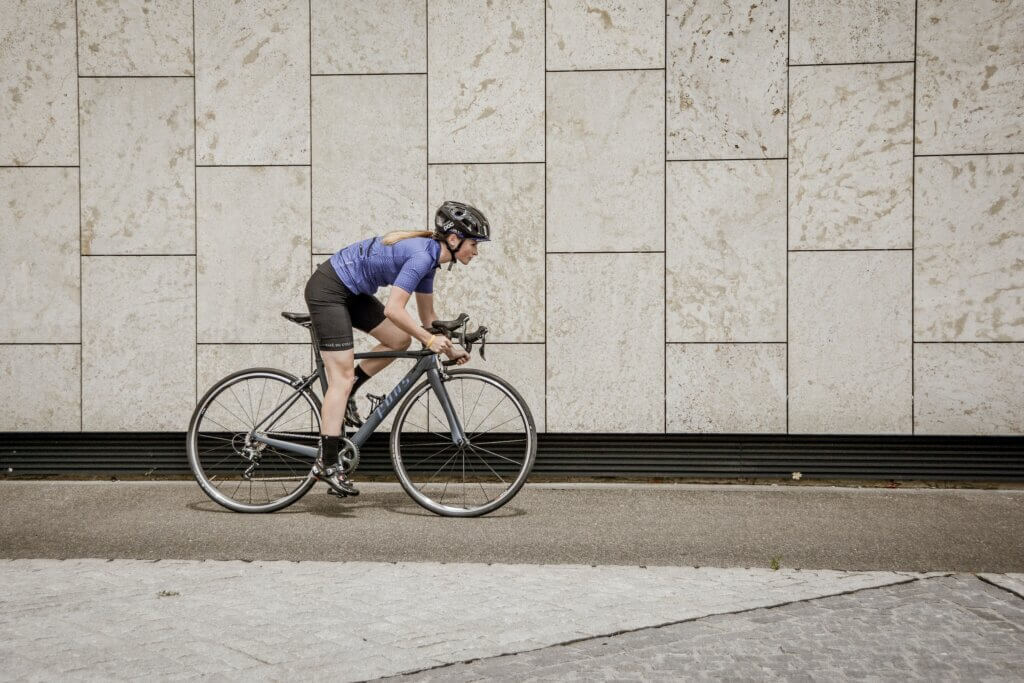
Staying Comfortable in a Lower Position
Achieving and maintaining a lower, more aerodynamic position can be challenging, especially for amateur riders. You may notice that professional riders can effortlessly maintain a long and low position on the bike, but for the rest of us, it can be elusive.
The good news is that there are steps you can take off the bike to enhance your comfort in such a position.
Improving Your Flexibility
Flexibility is the key to achieving and maintaining a low aerodynamic position, but remember that it takes time to enhance your flexibility. Focusing on stretching your hamstrings, glutes, and lower back can significantly impact your ability to stay comfortable in an aerodynamic posture.
In addition to targeted stretching exercises, consider incorporating regular off-the-bike sessions, such as yoga and pilates. These practices can provide substantial benefits in terms of improving your flexibility.
With dedication and a consistent routine, you’ll find it easier to attain a ‘flat back’ position and stay comfortable while riding in an aerodynamic posture. Remember, flexibility is a journey, and incremental progress will lead to significant gains in your aerodynamic efficiency.
Enhancing Core Strength
Improving your core strength is essential for staying comfortable in a low aerodynamic position. A strong core not only allows you to maintain the desired posture but also enhances your pedaling efficiency and reduces the risk of injuries.
By working on your core strength through targeted exercises, you can achieve greater stability and power transfer, ultimately making you a more aerodynamic and efficient cyclist.
Aero Bikes and Gear
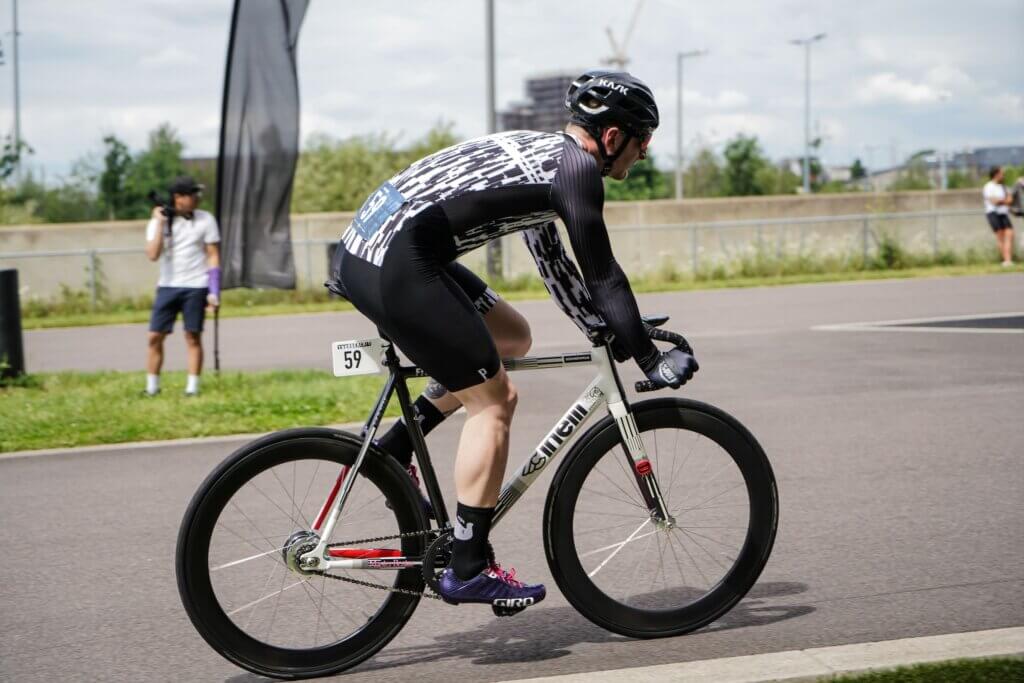
Now, let’s discuss optimizing your road bike and gear for aerodynamics. The right bike and gear choices can have a significant impact on your overall aerodynamic performance.
Aero Bikes
One of the best ways to reduce drag when cycling is to acquire a well-designed, air-cutting bicycle. Bicycles, in fact, account for a significant portion of a cyclist’s total drag, ranging from 30% to 40%.
That’s where specially designed “aero” bikes come into play, offering cyclists substantial drag reduction. These aero bikes are engineered with features that aim to minimize wind resistance and enhance speed. They often boast streamlined tube shapes and unique frame designs, specifically crafted to help you efficiently cut through the air.
By investing in an aero bike, you can gain a noticeable advantage in terms of aerodynamics, ultimately leading to faster and more efficient rides.
Aero Wheels
Aero wheels are another essential component for improving your road cycling aerodynamics, and deep-section rims offer remarkable speed gains. Typically 40 to 60mm deep carbon rims strike an optimal balance between aerodynamic efficiency, weight, and handling.
Well-designed rims minimize wind resistance, enabling higher speeds with less effort. However, overly deep or poorly optimized rims can feel sluggish in crosswinds.
The performance boost these wheels offer is undeniable, but they come at a cost. You can expect to pay anywhere from €800 to €2,500 ($900 to $2,500) for a set of deep-section carbon rims, they’re a premium investment.
The advantage they bring to your cycling experience is worth considering, especially when combined with other aero enhancements. With aero wheels, you’ll conquer the road more efficiently, making the price tag a valuable investment in your road cycling journey.
Aero Helmets
Aero helmets are a great way for cyclist’s to maximise aerodynamic efficiency. These helmets are meticulously designed to minimize wind drag, with a sleek, elongated profile that cuts through the air with minimal turbulence.
While their primary focus is aerodynamics, modern aero helmets strike a balance between reducing drag and maintaining ventilation.
One of the trade-offs with aero helmets is that they may have slightly less ventilation than traditional helmets, which could lead to discomfort when cycling in warm weather.
However, advancements in helmet technology have significantly improved airflow and cooling systems, making them suitable even in hot conditions.
Aero Clothing
Aero cycling clothing is a game-changer when it comes to reducing wind resistance and maximizing your aerodynamic advantage.
The difference can be astounding, as demonstrated by this comparison: A cyclist with a modern skinsuit can gain more than a two-minute edge over a 40K time trial compared to wearing a loose fitting club kit that flaps in the breeze.
These specially designed jerseys, bib shorts, and skinsuits offer a snug and sleek fit, minimizing turbulence and drag as you ride. With aero clothing, you not only look the part but also significantly enhance your road cycling performance by cutting through the air with greater efficiency.
Aero Shoe Covers and Socks
Don’t overlook the importance of aero shoe covers and socks in your quest for enhanced aerodynamics. Aero shoe covers are designed to minimize turbulence around your cycling shoes, reducing drag and improving the overall efficiency of your lower body.
These covers act as a streamlined shield, helping you slice through the wind more effortlessly. Additionally, aero socks play a subtle yet crucial role in optimizing your aerodynamic profile.
When it comes to aero socks, it’s worth noting that the gains are so minimal that they are essentially unnoticeable unless you’re racing. In most everyday cycling situations, traditional cycling socks are perfectly adequate.
Moreover, aero socks tend to lose their stickiness due to the silicone grippers after a few washes, making them best saved for race day, where every small advantage counts.
Bike Maintenance and Optimization
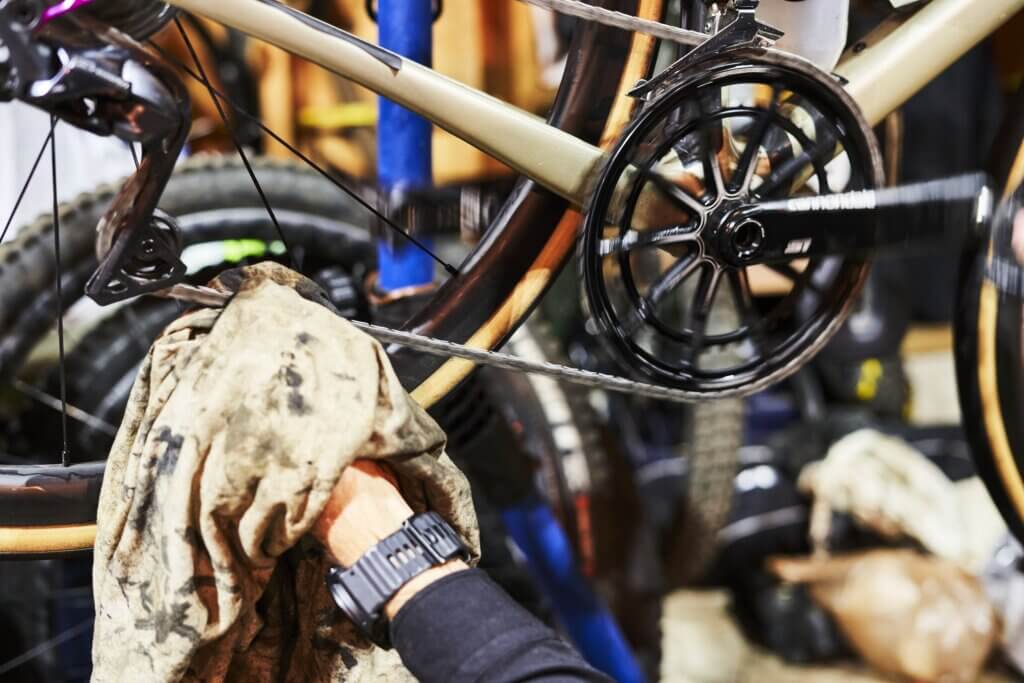
Your journey towards becoming more aero doesn’t end once you’ve optimized your setup. Regular maintenance and periodic reevaluation are key to maintaining your aerodynamic advantage.
Regular Bike Maintenance
Maintaining your road bike in top condition is not only essential for its longevity but also for your aerodynamic performance. It might not come as a surprise that a clean bike is faster than a dirty one, but you might be amazed to discover just how much accumulated grit and grime can cost you in terms of wasted watts.
Studies have revealed that a “dirty” chain alone can sap your power by 10-20 watts, which translates to a significant 1-2 kilometers per hour at race speed. To maximize the benefits of bike maintenance for aerodynamics, focus on the drivetrain and components, especially those that spin.
The critical aspect of bike cleaning when it comes to speed and pedaling efficiency is cleaning and lubricating your chain. The chain is where you transfer power from the pedals to the wheel, making it the area where you can lose the most power through drivetrain inefficiency.
To regain those lost watts, it’s essential to clean and lubricate your chain regularly. Remember that you should apply the lube to the chain’s rollers (inside) rather than the plates (outside).
Once you’ve applied the lube, don’t forget to wipe off any excess with a cloth. Any excess lube left on the chain can attract dirt and quickly undo the benefits of your maintenance efforts.
Regularly Re-evaluate
Aero gains are not static, and as your fitness level and cycling goals evolve, your initial setup may require fine-tuning. It’s crucial to periodically reevaluate your riding position, gear choices, and bike components to ensure that you’re continually reaping the benefits of your aerodynamic enhancements.
Your riding style and performance objectives may change over time, and by making necessary adjustments to your aerodynamic setup, you can stay ahead of the curve.
Whether you’re seeking to improve your recreational rides or preparing for competitive events, this ongoing evaluation process ensures that you maintain your edge in the pursuit of greater aerodynamic efficiency.

